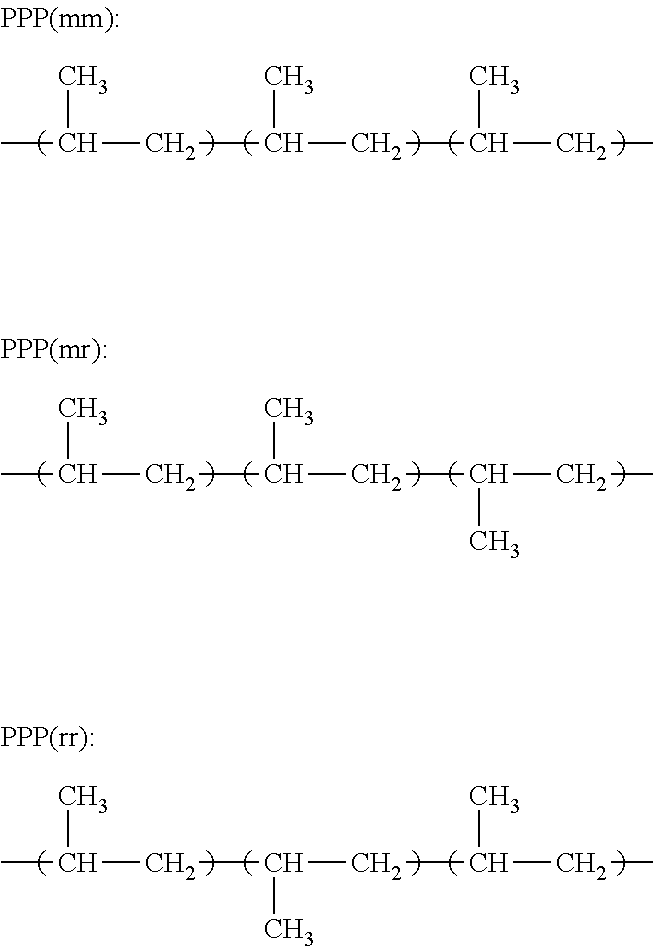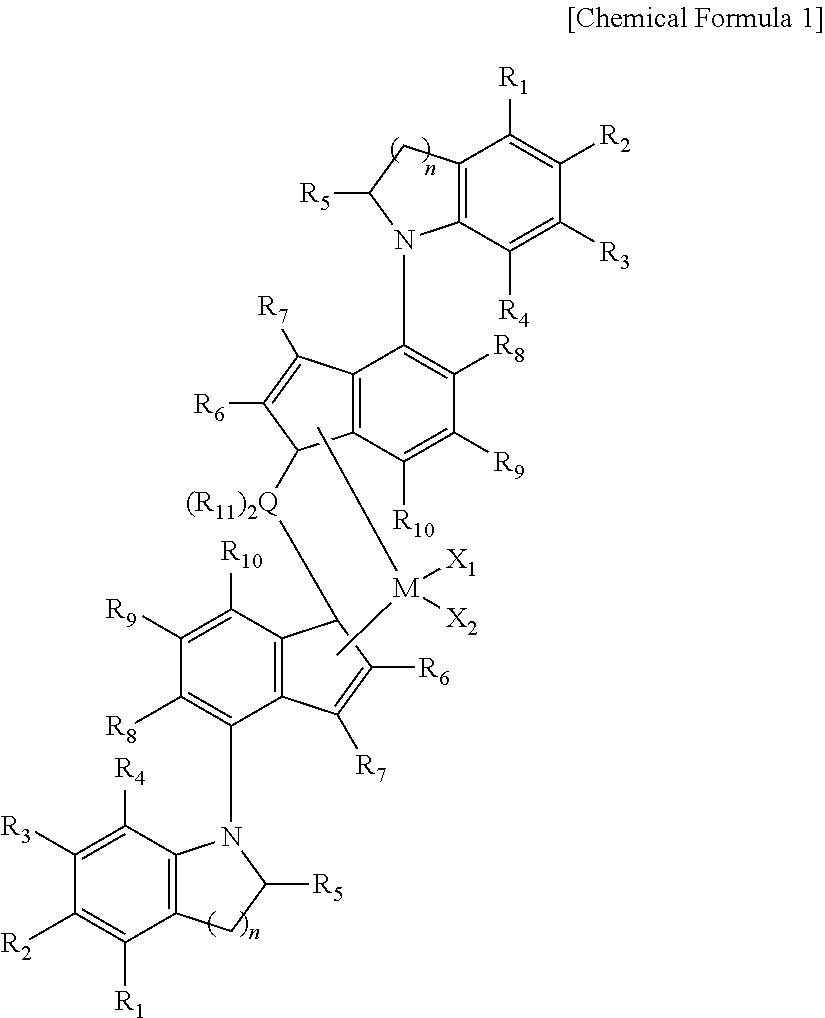Propylene-based elastomer
a technology of elastomer and propylene, which is applied in the field of propylene-based elastomer, can solve the problems of high production difficulty of propylene-based elastomer with high productivity and yield, and achieve excellent mechanical properties, high tacticity, and high tacticity
- Summary
- Abstract
- Description
- Claims
- Application Information
AI Technical Summary
Benefits of technology
Problems solved by technology
Method used
Image
Examples
preparation example
Compound and Transition Metal Compound
preparation example 1
Preparation Example 1-1: Synthesis of 1-(2-methyl-1H-inden-4-yl)-1,2,3,4-tetrahydroquinole
[0069]To a 500 ml 2-neck Schlenk flask, 4-bromo-2-methyl-1H-indene (15.7 g, 75.63 mmol), 1,2,3,4-tetrahydroquinone (11.08 g, 83.19 mmol), LiOtBu (18.16 g, 226.89 mmol), Pd(P(tBu)3)2 (0.77 g, 1.5 mmol) were added, and the starting materials were dissolved by adding 252 mL of dry toluene, followed by stirring overnight in an oil bath at 110° C. The solution was cooled to room temperature, and then the reaction was terminated by adding 151 mL of deionized water thereto.
[0070]After separating an organic layer therefrom, an aqueous layer was extracted twice with 50 mL of dichloromethane (DCM). The organic layer was collected and dried over Na2SO4, and filtered, distilled, and dried under vacuum at 60° C. overnight to obtain an orange colored compound (15.8 g, quantitative yield compared to 4-bromo-2-methyl-1H-indene, 80% yield compared to the starting material).
[0071]1H-NMR (CDCl3): δ7.30-7.20 (m, 3...
preparation example 1-2
-dihydroquinolin-1(2H)-yl)-2-methyl-1H-inden-1-yl)-dimethyl silane
[0072]To a 500 ml Schlenk flask, 1-(2-methyl-1H-inden-4-yl)-1,2,3,4-tetrahydroquinole (15.8 g, 60.5 mmol) was added, and the starting material was dissolved by adding 300 mL of dry diethyl ether, and then n-BuLi (2.5 M in n-Hx) (26.6 mL) was added thereto at −78° C., followed by stirring overnight at room temperature. Then, the mixture was filtered by using a glass frit (G4). The remaining solid on the glass frit was dried under vacuum to obtain a lithiated product (14.4 g, 89% yield) as a while solid. The lithiated product (14.2 g, 53.1 mmol) was put in a 500 mL Schlenk flask in a glove box and 152 mL of dry toluene and 7.6 mL of THF were added thereto for dissolving the same. After lowering the temperature to −30° C., Me2SiCl2 (3.2 mL, 26.6 mmol) was added thereto and the mixture was stirred at room temperature for a day. Thereafter, the mixture was stirred for 5 hrs in an oil bath at 140° C. After the mixture was c...
PUM
| Property | Measurement | Unit |
|---|---|---|
| density | aaaaa | aaaaa |
| temperature | aaaaa | aaaaa |
| temperature | aaaaa | aaaaa |
Abstract
Description
Claims
Application Information
 Login to View More
Login to View More - R&D
- Intellectual Property
- Life Sciences
- Materials
- Tech Scout
- Unparalleled Data Quality
- Higher Quality Content
- 60% Fewer Hallucinations
Browse by: Latest US Patents, China's latest patents, Technical Efficacy Thesaurus, Application Domain, Technology Topic, Popular Technical Reports.
© 2025 PatSnap. All rights reserved.Legal|Privacy policy|Modern Slavery Act Transparency Statement|Sitemap|About US| Contact US: help@patsnap.com



